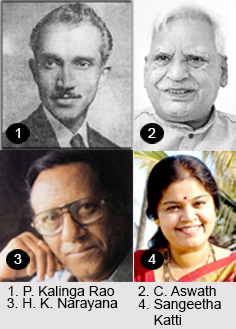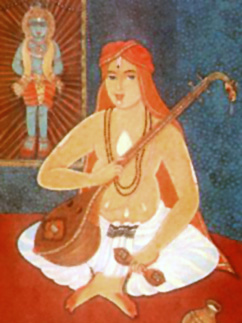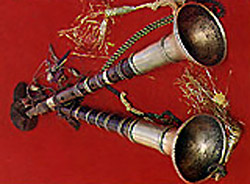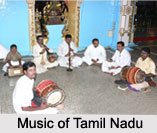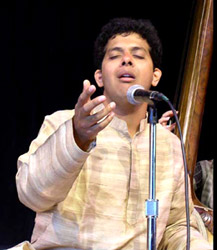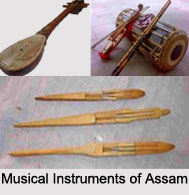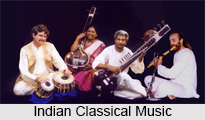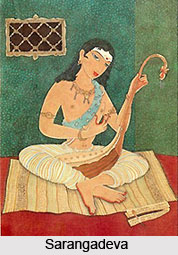Tamil music mirrors images of certain attitudes of consciousness by cultural manifestations. All these cultural activities reflect the attitudes of the human consciousness by their style, expression and theme. As a reflection of a certain attitude of consciousness, styles arise and styles are the sum total of those characteristics which give the work of art its identity. Consciousness does not exhaust itself in formal knowledge. It is neither identical with the thought process, nor is it limited to mere recognition. Consciousness is a process of constant assertion, a creative act of integration. The way in which we see the world depends on the type of our consciousness, which is capable of linking this work both in extent and time.
Attitude of Consciousness in Tamil Music
The attitude of consciousness of the Indian classical music can be called `intuitive-peripheral`, i.e. intuitive understanding and peripheral thinking. (That of Western classical music is `rationalistic-discursive`, is an understanding by rational analysis). In Indian music the octave is split into 22 intervals while in Western it is only 12. The micro-tonal character is the most important characteristic of Indian music while it is totally absent in Western music. The presence of a harmonic leading note in Western classical music gives a third dimension to the characteristic tonality. By dimension we mean the successive, simultaneous and concentrical combination of sounds.
Dimension of Music in Tamil Nadu
The first dimension is usually called `melody` (a successive combination of sounds). The second dimension is called `Chord` or `harmony` (simultaneous combination of sounds). The third dimension `tonality` consists in the concentric combination of sounds. Classical Indian music is generally mono-dimensional and exceptionally two-dimensional.
Classical Western music however is concentrically composed and becomes three dimensional by the action of the harmonic leading tone. The absence or presence of the harmonic leading tone is one of the most important distinguishing characteristics of classical Indian and classical Western music.
A musical culture, whose sound structure dispenses with tonal leading tone relationships, is the expression of an attitude of consciousness, for which space and time are not factors rationally calculated, which are but emotionally and spiritually experienced phenomena. Cave temples and the monumental Hindu temples also bear testimony to the absence of a rational consciousness of space. It is reminiscent of the tremendous cosmological conception according to which the universe itself is nothing but a cavern. The characteristic of Indian music is the fact that the form of the composition is not `composed` (not rationally constructed) but intuitively `improvised`. It represents an incessant creative process.
Western rationalistic, dialectical, triangular thought is directional thought, thought with an aim, stirring towards a climax, thought which develops and describes Indian intuitive, circular thought, on the other hand, conceives as a whole, and is something which complements itself, which does not describe, but circumscribes. New and faster means of communication, closer economic ties, and an increasing consciousness of mutual dependence have brought the peoples of the world closer together. Nationalism, religious divergences, party spirit and sectionalism are on the decline, and even in our consciousness the world will increasingly be accepted as a whole Eastern and Western thought will be cornerstones of a new integrating culture, a culture which gives promise of the unity of mankind and of a new humanism.
The function of music is to create, strengthen and reaffirm identity may be found in every kind of social grouping. Music has the potential to transcend differences. Music serves as a unifier of people. Art has always been the refuge for those sensitive souls who cannot face civilisations` horrors. Even in civilizations, it is a life line to human nature and to a certain extent stands in defiance of civilization. Every power has tried to co-opt it towards its own ends, but ultimately, art serves only the human spirit. It is irrepressible, and it cannot be claimed solely by any one culture

